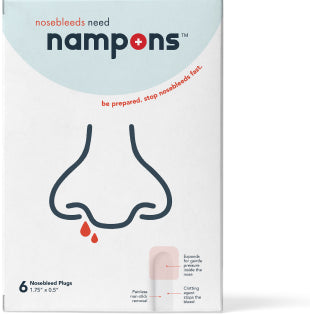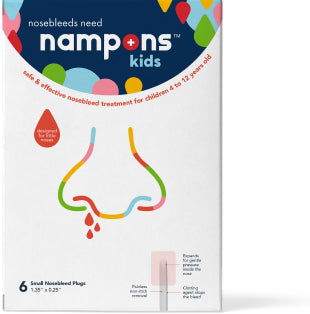Mold is spread through mold spores and it thrives in warm and damp conditions. It can appear throughout the year and throughout your home, and if it's not dealt with promptly, it could cause a variety of health problems, including nosebleeds.
How Does Mold Cause Nosebleeds?
Mold spores spread through your home and invade your lungs. They irritate your nasal passages and airways, and this can lead to breathing problems, a sore throat, a runny nose, coughing, wheezing, and sneezing.
Irritation and nasal damage are the main cause of nosebleeds, and while this often results from allergies, nose picking, and nasal dryness, it can also be caused by exposure to mold.
In the presence of mold allergies, the problems will be more pronounced and could lead to serious adverse reactions.
In some instances, such as in the presence of harmful mold spores and in people with a limited immune system or breathing problems, exposure to mold could lead to bleeding in the lungs, organ damage, and even death.
The mold exposure would need to be prolonged and severe to have such a serious adverse reaction, but it's possible.
A lung disease known as hypersensitivity pneumonitis can also result from mold exposure.
What is Black Mold?
Black mold is often described as a toxic mold and is considered to be the most dangerous type of mold. In actual fact, there is nothing to suggest that it is more dangerous than any other type and it encompasses several different varieties. It can still be toxic mold, but just because it's black doesn't mean that it's deadly and just because it's not black doesn't mean that it's safe.
How Do You Know if You Have Mold Spores In Your Home?
How do you know if you have black mold in your home? There are a few ways that it will reveal itself to you, including:
- You Can See It: Usually, by the time you can see the mold, it is already out of control, although that's not always the case. Mold is a fungus and it spreads quickly, thriving in the parts of the house where humidity levels are high, including the bathroom and basement.
- Flu Symptoms: If you constantly have a scratchy throat and feel like you always have a cold or flu, it could be caused by mold toxins.
- It Smells: We tend to get used to smells when we're surrounded by them, but you may detect a musty and damp fragrance when you enter your house after being outside.
- You Have Allergic Reactions: If you are constantly having problems with allergies inside the home, it could suggest that you have a problem with mold growth.
- Other Health Issues: Exposure to mold fungus can cause an array of health problems, including asthma symptoms (chest tightness, difficulty breathing), headaches, nosebleeds, and other negative health effects. If you have these problems when you're in the house but they disappear outside of it, you might have mold in your home.
How to Minimize the Risk of Mold Exposure
If you have mold spores spreading through your home, it's a problem that needs to be addressed sooner rather than later. The longer you leave it and ignore it, the more harm it will do to your health and the health of your family members.
To keep those issues to a minimum, try the following:
- Keep humidity levels below 50%. You can use a dehumidifier or an air conditioner to do this.
- Make sure you have good ventilation throughout your home.
- If you're redecorating your home, looking for paint that contains mold inhibitors.
- Clean the mold using bleach. It won't remove it completely from your home, but it'll stop it from spreading and will reduce your exposure.
- Try to keep your home as dry as possible, as mold thrives in damp conditions.
- If your house has flooded many times, consider changing the rugs and carpets, as they may be harboring mold spores.
- Swap carpets and rugs for laminate tiles, as they are easier to clean and dry.
You can also speak with a mold remediation specialist. They are experts in removing molds from homes and will attack the problem at its source, eliminating your exposure and keeping your home mold-free and your body side-effect-free going forward.



